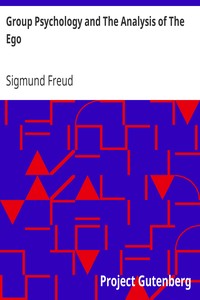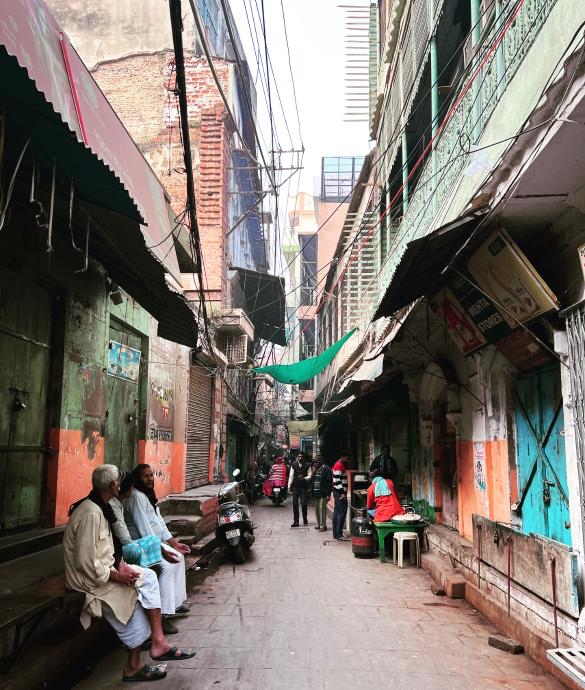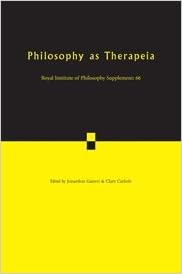anup dhar
স্বদেশী সমাজ (swadeshi somaj)
Tagore distinguishes between the ‘desire for tea’ which the British have engendered in the Indian and the ‘need for water’ that the Indian pallisomaj has felt all along and has struggled to make (un)available over a thousand years (while Tagore sees the pallisomaj as a republic of communion, Ambedkar sees it as a republic of humiliation; the truth is perhaps somewhere in-between, uneasily in-between).
Would the State now fulfil our need for water? Would we beg to the State? Or make demands? Place applications before State officials? Or would the ‘somaj’ organise the flow of water in rural contexts, in what Tagore calls pallisomaj. Each somaj – which is perhaps precariously placed between the western idea of ‘society’ and ‘community’ – has a life force and a vitalism of its own. Each civilisation has also a life force and a vitalism of its own.
Some civilisations could be designated as ‘political civilisations’. Some could be designated as ‘samajik civilisations’. Some survive if the State survives. Some survive under the State. Some survive in blatant Statism. Some exist with the State. Some survive only if dharma–rasa survives.
Will repeated incisions on the body of the State (in the form of petitions) cure us of our social dis-ease or of our social suffering? The dis-ease is not one of water shortage. It is of a scarcity at the core of our mormosthan (inner affective space). The sadhana of the political would be to connect souls. The broom cannot do what needs to be cleansed inside. Saw-desh bhakti and atma-shakti, literariness and dharma, joy and impossible unity are connected in the sublaternised mela. It is not shameful to eat on a banana leaf. It is lonely to eat alone.
How to connect the extant idea of a somajpati with a possible future somajtantra? How is somajtantra different from socialism? Given that there is a translation-gap between social and somaj?
The Spirit of Marx
anup dhar
Marxism has conventionally found itself on the side of ‘materialism’; there has been a hyper-separation (as against the overdetermination) of ‘matter’ and ‘spirit’ in much of Marxian praxis. How does one make sense of this hyper-separation, of the conventional bar, which is also the ‘bar of convention’, between Marxism and the spiritual? Can one carefully work one’s way towards an ‘and’ between Marxian questions and spiritual quests, even if it is an uneasy ‘and’?
Does the setting up of a dialogue between For Marx (a la Althusser) and Of Spirit (a la Derrida) offer us a way to work towards the ‘and’?
Does the Althusser-Lacan Correspondence (letters exchanged [1963-1969] between Althusser and Lacan) offer us a clue as to the nature of a possible ‘and’?
The ‘and’ between Marxism and spirituality could perhaps be marked in terms of a connection between a rethought materialism (overdetermined by what Foucault calls the asketic) and a rethought spiritualism (overdetermined by what Heidegger calls phronesis).
In its attempt at working through the uneasy ‘and’ between Marxism and spirituality (including the question: why at all do we need an ‘and’), one would possibly need to depart from the ‘cognitive notion of truth’ and arrive at two other notions of truth – the practical-social in Marx and the experiential-affective-ethical-aesthetic in Gandhi-Tagore.
One would perhaps get a glimpse of the cusp of Marxism and spirituality in the dialogue between the two.
Praxis at the cusp would also inaugurate the possibility of an ‘anti-Oedipal’ future for Marxism and a this-worldly present for spirituality.
The curious byproduct of the spiritualization of Marxism or the Marxization of spirituality is a somewhat secret communion that gets set up with a rethought psychoanalysis: psychoanalysis-as-asketic-and-phronetic.
The Concept of the Political: ab-original insights
anup dhar

“If another mass attachment takes the place of the religious one, as socialism seems currently to be doing, the same intolerance towards outsiders will ensue as in the War of Religion, and if differences of scientific opinion ever managed to to attain a similar importance for masses, the result would be the same for this motivation as well”. Freud in Mass Psychology and the Analysis of the ‘I’.
Schmitt begins the book The Concept of the Political with despair: “one seldom finds a clear definition of the political”. The problem is exacerbated by the fact that “the concept of the state presupposes the concept of the political”; in one way or another the “political” is generally juxtaposed to the “state” “or at least is brought into relation with it”; “the state thus appears as something political, the political as something pertaining to the state”.
Gandhi and Tagore question this tradition of the stapling of the state and the political. Both question the traditional stapling of state and the political. Both make an attempt to rescue the political from its statist or nationalist moorings. Both questioned the monopoly of the state on politics. Both put to crisis the “identity of [the total] state and society”.
Painting the Planet
anup dhar

What is it to paint the planet?
And not pass a dagger through the body of the planet?
Not mine – with a long spear.
Not make her mine. Mine and ‘make mine’. In a possessive masculine territoriality.
Hitherto, we have done agriculture – largely stemming from the enlightened human’s scientific relationship with soil and seed.
What would it be to return to cultivation? Cultivation – also – of the horizon of a relationship with soil-seed? With animals? Plants? With each other?
What is it to not keep scratching the surface of the planet with a tractor? Capitalism approaches the planet with a dagger and a spear.
What would be to relate to the planet with a paint brush?
This is not to take a deep ecology position. This is not to leave the planet untouched. With each breath we transform the planet. It is to approach the question of the transformation of the planet (as also of us) with a paint brush.
What would we do as a species? Shall we roam the planet with a dagger and a spear? Or with a paint brush?
What would be an aesthetic – and not an extractive relationship with the planet?
Debt: The expression ‘Painting the Planet’ was birthed accidentally in a Community Economies session hosted by Bhavya Chitranshi. Swarnima Kriti was presenting her paper on the journey of Chinhari: The Young India in the session. She was showing how the young indigenous women associates of Chinhari – who come from largely forest societies – took to painting as a form of self-expression during Covid and how the paint brush and the canvas (and not just pen and paper) had become a form of aesthetic becoming for them. I had kind of blurted out this phrase ‘painting the planet’ as she showed the paintings to the participants. It appeared all of a sudden that the kind of cultivation practices (adim kheti) with indigenous seeds Chinhari was involved in was a kind of painting the planet.
The Death of Depth
anup dhar

What is it that ‘Varanasi’ veils? Depth?1
Varanasi – the modern cocktail of religion and capital!
What is it that the Monotheism of Varanasi veils? Multiplicity?
Does it veil the maternal polytheism, the pagan pluralism of faith? Running through the lanes and bylanes? Running through the bylanes of bylanes? What is it that the capitalism of religion and the religion of capitalism veil? The spirituality of the older inhabitants of Benaras? The spirituality of the yet older inhabitants of Kashi? The spirituality of the adi-vasi – the original inhabitant – of Kashi, of Benaras? The spirituality of the even older ones who lived here before the widow from Bengal arrived.
Do we then need to distinguish between the scorchingly public religion of Varanasi and the solitudinal religion of the women of Kashi?
Do we then need to distinguish between the public religion of modern men and the medieval spiritual form of the feminine?
Do we need to distinguish between believed religion (marked by membership) and lived religion (marked by the widow’s praxis of self-transformation)?
What is it that the official Hinduism of Varanasi veils; another model of pagan hinduism? an Other imagination of hinduism? hinduism marked by an originary multiplicity of divinities; divine forms; paths to the divine – like the lanes and the by-lanes. There was no One path. No one Highway. No royal road to the Divine. This is the pagan hinduism of 33 crore godheads. 33 crore kinds of praxis of being-in-touch with the divine within.
Not the Monotheistic Hinduism of One God.
One Holy Shrine.
One Holy Book.
Does what Varanasi veils – i.e. the continuum from Kashi to Banaras – also offer a model of the human psyche? With its labyrinthine lanes and by-lanes; one leading to the other; one lending itself to the other; each waiting with a surprise-effect; each opening to a different divinity; a different idol – human idol, animal-idol: a different temple-mosque; a multiplicity of medieval divinities await us at every bend, at every u-turn, at every nook and corner.
One cannot but be amazed by the maze (a la Lacan).
Is the unconscious a labyrinthine structure?3 Of lateral associations? Of a horizontal mesh of lanes and bylanes; which do not lead to a final highway or a final destination; but to another lane or bylane?
The labyrinthine structure is in turn built on layers of life-history; on a thousand plateaus of the past; on the footprints of the Bengali widow who made her way down the slippery slopes of the ghats of Kashi, at sunrise; and made her way up the stairs to her puja room, in wet clothes; after a holy dip. The stairs still bear the marks of those lonely footprints. Of an abandoned single woman; not a widow; abandoned by the Bengali elite families, the Victorian-ised English educated Bengali. One can still hear the whisper of her laboured steps to an Other world; that was to come. This world had been cruel. Would the other world be kind? She was followed by the Jain traders of Rajasthan; the bearers of merchant capital. Who laid the foundation of another city-space – Benaras. The single woman’s Kashi overlaid by the Benaras of merchant capital. Benaras overlaid by Varanasi of Monotheistic Hinduism and the circuits of global capital. Could this be another way of conceptualising the unconscious? Conceptualising it as a repository of a thousand and one plateaus?

Banaras is as if the multiple geological layers of affect, emotion, feeling, longing, loss, hurt and hope. As also of sexuality – the worship of the lingam and the yoni. Of eros – the ardhanarishwar Radha-Krishna.
“To be in love is to get lost in a labyrinth. Love is labyrinthine. You don’t find yourself along love’s byways; you don’t find yourself.”
These labyrinthine structures are, as if, an immanent allegory of love.
This labyrinthine complexity, this depth of layers looks flattened, looks arid in contemporary Varanasi. One can call it: the death of depth.
As if, dry erectile greed of (capital) accumulation and the ‘philosophy of more’ has taken over the silent solitude of riverine spirituality.2
As if the regressive yet modern urge to be the Tallest, the Highest, the most Powerful has taken over the medieval horizontality of cohabitant poly-spirituality.4

Notes:
- Debt: this reflection would not have been possible without inputs and insights from Niti (Gupta) in an accidental phone call conversation on a cold winter evening. To thank is to think. The pictures titled ‘Being and Nothing’ and ‘Multiple’ are also hers.
- This reflection distinguishes between modern Varanasi, medieval Kashi and Benaras at the cusp of the medieval and the modern. Is modern Varanasi more about religion; and Kashi more about spirituality? Kabir was born perhaps in 1440 in this context of spiritual surplus.
- Debt: The idea that the lanes and bylanes of Kashi-Banaras could offer a model of the unconscious was born in a longish conversation on psychoanalysis with Prakriti (Sharma). To think is to thank. The picture titled The Labyrinthine Unconscious is hers.
- This reflection makes a sharp distinction not just between medieval and modern, but between religion and spirituality. I build on Marx to mark the distinction between religion and spirituality:
Marx writes in the “Introduction” to A Contribution to the Critique of Hegel’s Philosophy of Right “Religious distress is at the same time the expression of real distress and also the protest against real distress. Religion is the sigh of the oppressed creature, the heart of a heartless world, just as it is the spirit of spiritless conditions. It is the opium of the people”. Marx offers two contradictory perspectives to religion:
Perspective One: Religion = sigh sigh of the oppressed / heart of a heartless world / spirit of spiritless conditions
Perspective Two: Religion = opium of the people

Building on Marx, I see religion as the opium of the people; and spirituality as the sigh of the oppressed.
I would also like to draw a distinction between modern spirituality and medieval spirituality. Medieval spirituality is a movement from the loftiest theological abstractions, the most other-worldly passion for God and the Infinite, to the most intimate and personal realization of the humanised divine, expressed in this-worldly and everyday metaphors of life and living – including metaphors of home – and symbols of love drawn guiltlessly from Hindu and Islamic contexts.
Philosophy as Therapeia
“Philosophy is an art of living that cures us of our illnesses by teaching us a radically new way of life” – Arnold Davidson

